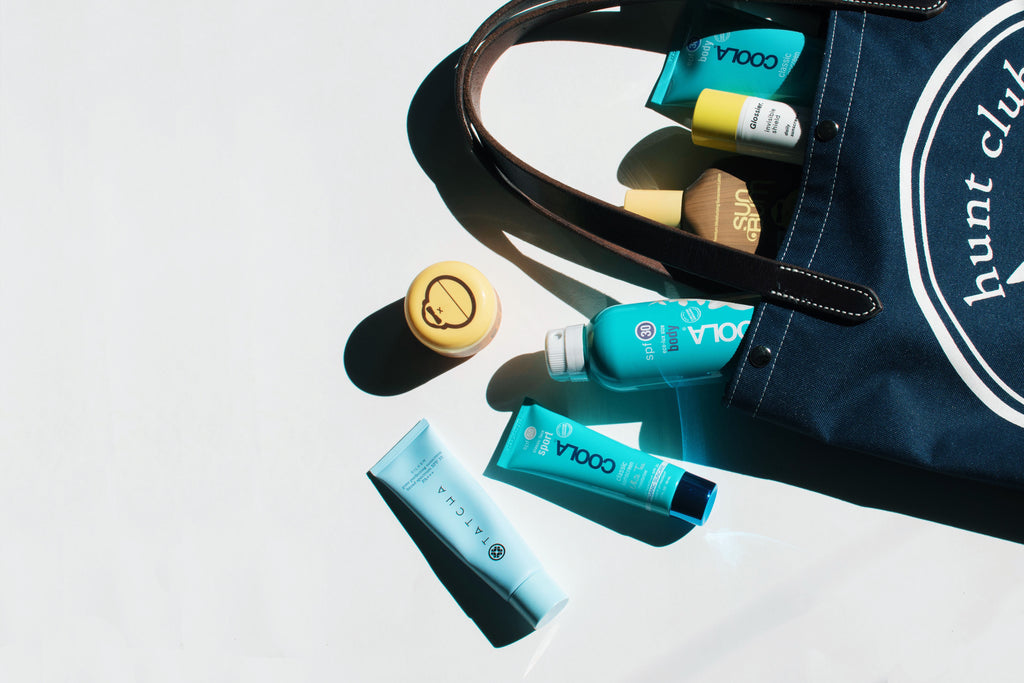It’s one of the most important steps every rider should take before getting in the saddle, yet only 18% of surveyed riders say they do it every day. Picking feet? Checking your girth? Nope, it’s applying sunscreen – something our parents would diligently badger us about as children but that many of us fail to do as adults. Maybe it’s because we’re too busy, concerned greasy formulas will flare up our acne, or think we’re adequately protected with technical sun shirts and wide brim helmets. - we're good at making excuses, right? With skin cancer rates on the rise, however, it’s something we all need to make time for.

The first step to protecting yourself from the sun's harmful rays is to choose a sunscreen that fits your lifestyle, skin needs and activity level. If you don't currently wear sunscreen at the barn, read on to figure out which kind might be right for you. Even if you’re happy with your current product choice, summertime is a great time to educate yourself about the science behind your favorite sunblock.
After running a series of polls on our friendly neighborhood Twitter account, we discovered that the biggest knowledge gap surrounding sunscreen seemed to be the difference between physical and chemical sunscreens, and why we should use one over the other. When asked to choose between the two, nearly 70% of surveyed riders responded with “There’s a difference?" Spoiler alert: yes, there's a big difference. Get ready for a hefty info dump on the science behind your favorite sunscreens!

Often called “sunblock”, these sunscreens work by doing just that - reflecting and scattering harmful UV rays from your skin’s surface. Physical sunscreens always contain inorganic mineral ingredients, namely titanium dioxide or zinc oxide, which sit on top of skin and form a protective barrier. The mineral ingredients in physical sunscreens offer protection against both UVA and UVB rays, making them naturally broad spectrum. Because these ingredients sit on top of skin, they are susceptible to being washed or rubbed off. This means you should reapply them regularly - at least every two hours. On the plus side, both zinc oxide and titanium dioxide are stable ingredients and do not require extra chemicals in their formulations to work properly like chemical sunscreens do. As a result, physical sunscreens are gentler on sensitive, acne prone skin, and are less likely to sting your eyes during a particularly intense jumping lesson (ouch!). Most sunscreens with the term “mineral” in the title contain exclusively physical UV filters or a mix of physical and chemical.

Chemical sunscreens work in a more complex way than simply reflecting the sun’s harmful rays. Chemical sunscreens contain organic compounds which absorb UV rays, triggering a chemical reaction that converts them into heat that is dispersed and released from the skin. While chemical sunscreens do need to be applied ahead of sun exposure (up to 20 minutes in advance so they can penetrate the skin fully), they are more resistant to water and sweat. Chemical sunscreens still need to be reapplied regularly, however, as the UV filters they contain break down faster in direct sunlight compared to those found in physical sunscreens. Due to the complex nature of the reactions by which they dissipate UV rays, chemical sunscreens usually contain extra stabilizing ingredients which can make them ill-suited for acne sufferers or individuals with sensitive skin. Avobenzone, a popular chemical UV filter, can cause increased redness in rosacea sufferers. Chemical sunscreens do absorb completely into the skin, making them ideal for applying under makeup and for individuals with darker skin tones who wish to avoid the white cast that physical sunscreens can impart.

Most in-market sunscreens contain both physical and chemical UV filters so you get a nice mix of the benefits of both, but if you have special skincare needs you should definitely be more discerning about the ingredients in the suncare products you use. zinc oxide and titanium dioxide are the active ingredients to look out for in physical sunscreens, while oxybenzone, octinoxate, octisalate and avobenzone are key components of most chemical sunscreens. The bottom line is this: always know what the ingredients are in the sunscreen you’re using, and if you’re concerned about how they’ll affect your skin, always consult your dermatologist!

Once you've chosen the sunscreen that's right for you, it's always a smart move to limit your sun exposure even more by gearing up with the right clothing and accessories. Long sleeve sun shirts with UPF ratings are always a safe (and stylish) move. With so many options on the market today, the discerning rider has a choice between going bold and preppy (Lilly Pulitzer lovers will go gaga over these lovelies from IBKUL) or subdued and classic. Adding a wide brim helmet to your gear collection is also great idea if you live in a sunny part of the world, since your face is particularly sensitive to sun exposure and damage. Detachable visors like the classic EquiVisor are an affordable alternative that actually offer more protection than most wide brim helmets on the market today. One important detail to remember, though, is that wide brim helmets and visors do nothing to protect the back of your neck! After one-too-many sunburn incidents, we developed the Sombra Riding Buff just for this purpose. This light as air tubular bandana offers UPF protection that won't sweat off and will always look cute.
No matter which products you use, it's critical that you create a system that fits your lifestyle that you will actually follow every single day. Skin damage from sun exposure builds up over the years, so finding products and gear that work for you and sticking with them day in and day out is a surefire path to success.
Thanks for sticking it out to the bitter end! Have any burning (get it?) questions about skincare and sunscreen that you just can't seem to get answers to? Drop us a line through the contact form or at hello@shophuntclub.com. Some of our favorite resources (and sources for this post) are included below. If you don't already slather on the sunscreen before every ride, hopefully this post has inspired you to get out there, find the right product for you, and practice safe sun! Your future's too bright not to wear sunscreen.
https://intothegloss.com/2017/05/sunscreen-FAQs-dermatologist-aesthetician/
http://blog.reneerouleau.com/chemical-vs-physical-sunscreens-pros-cons/
https://www.tatcha.com/tatcha-institute/ingredients-in-sunscreen-chemical-vs-physical-sunscreen/



